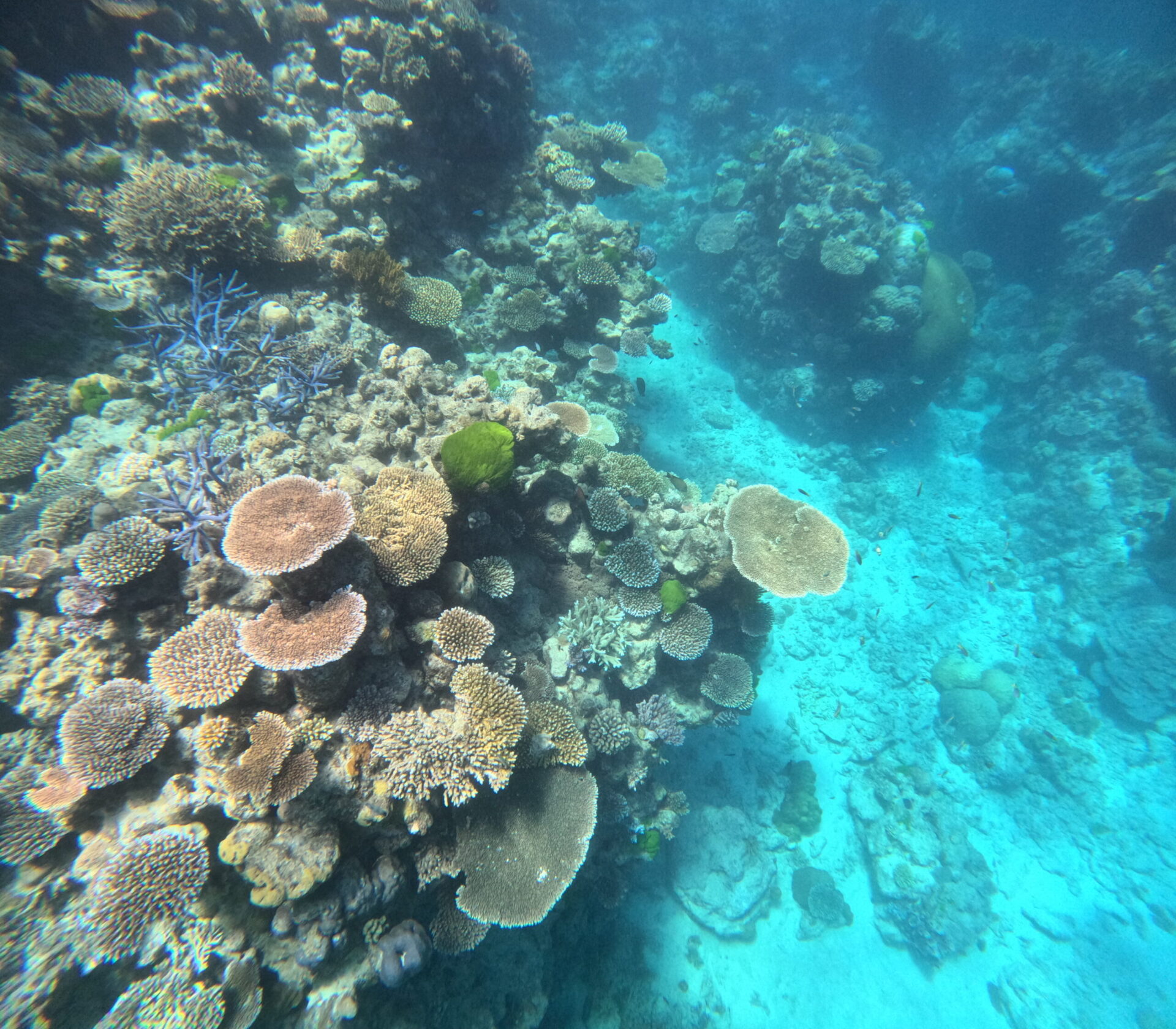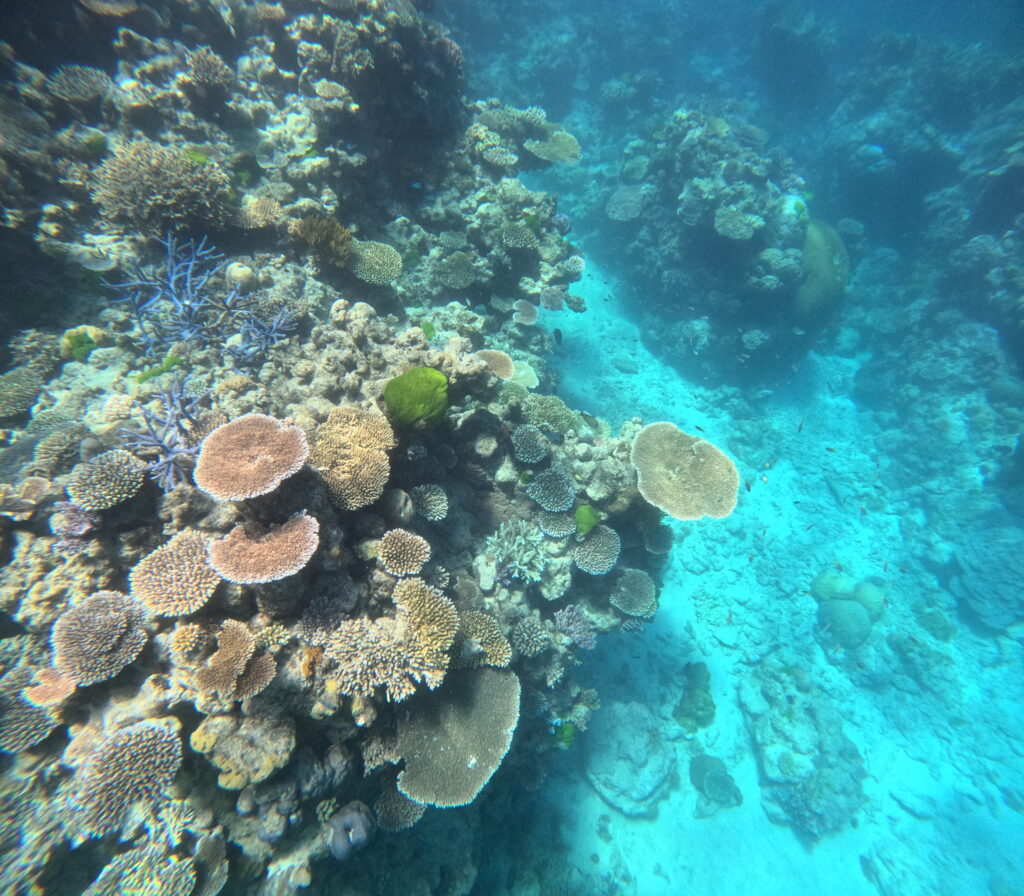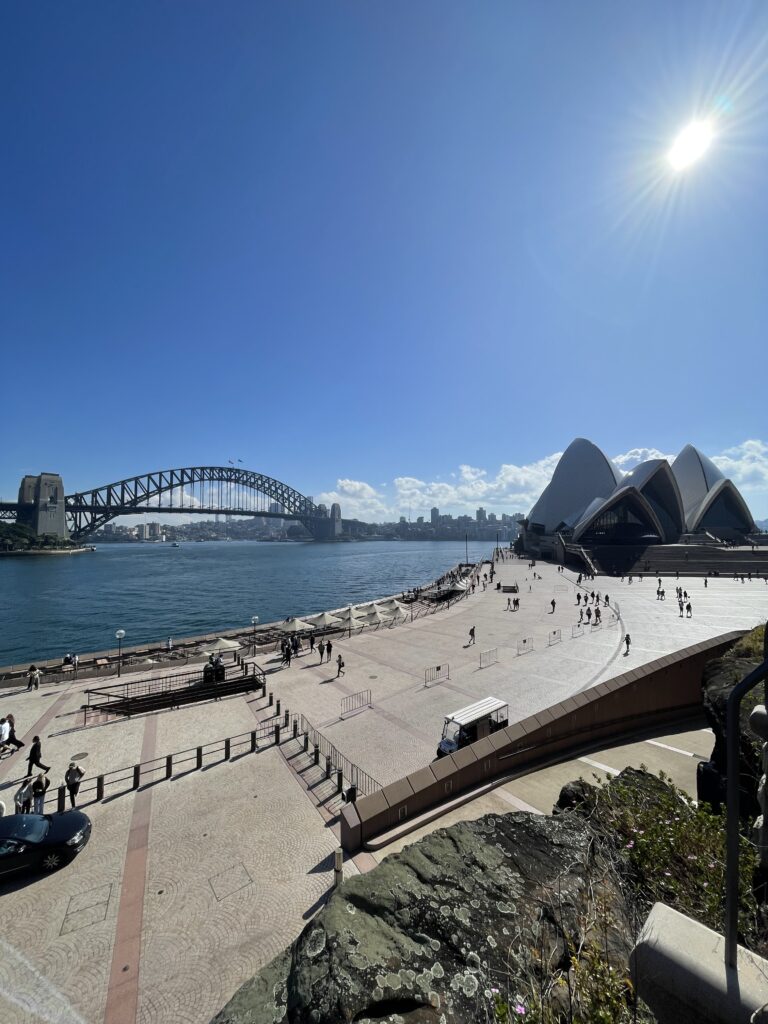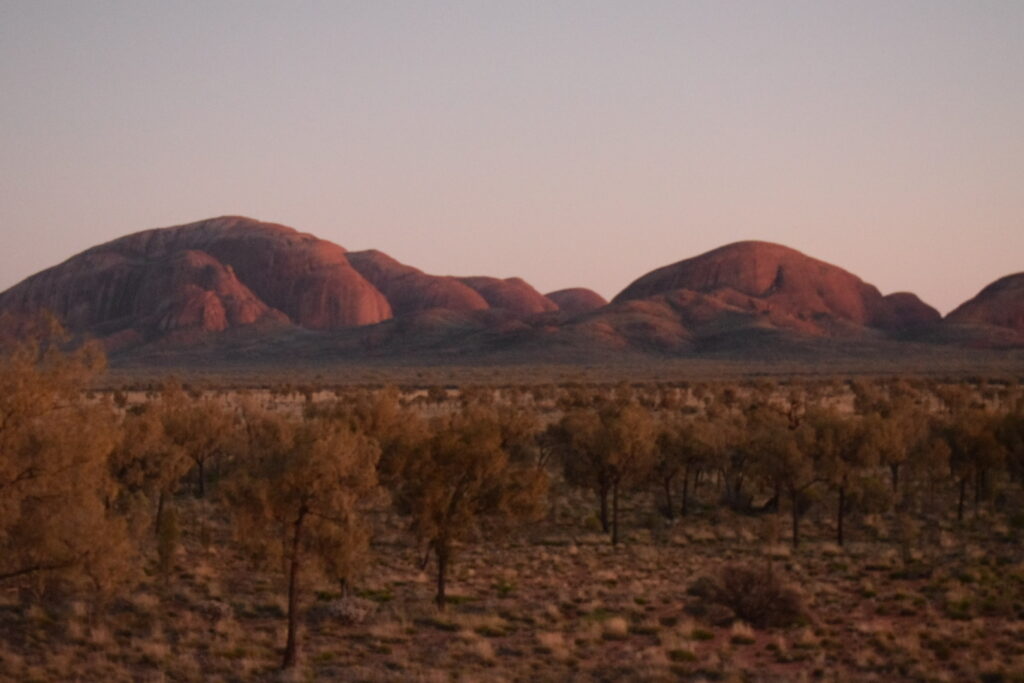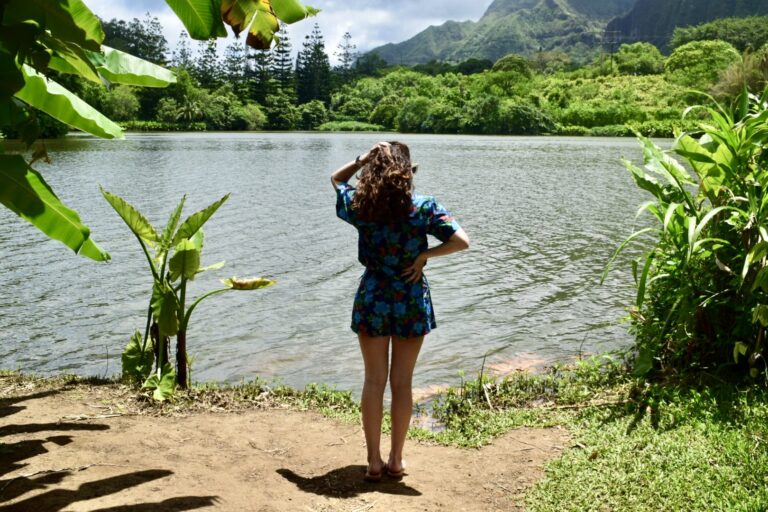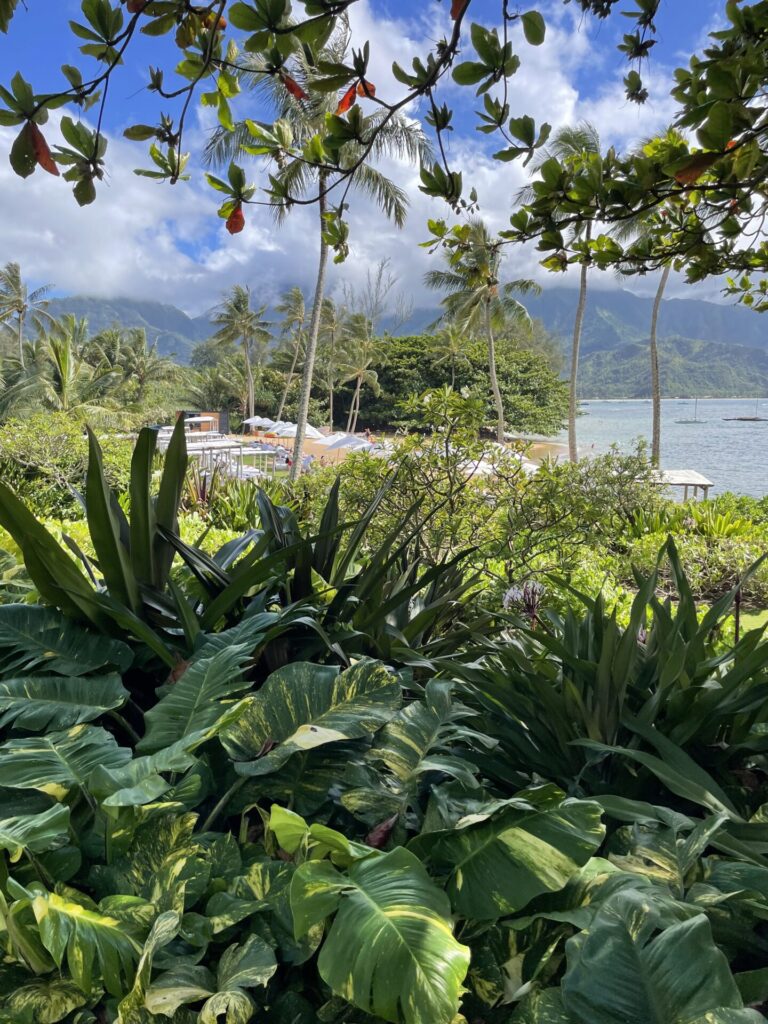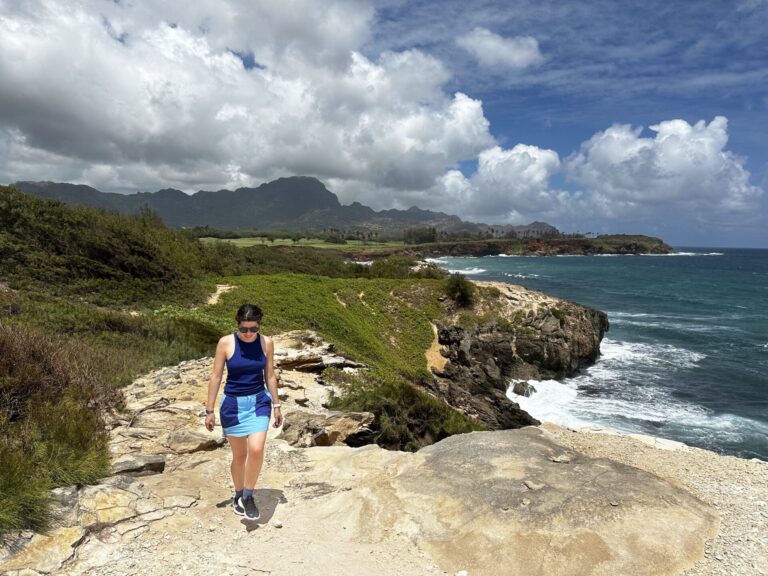Cairns 2 Day Liveaboard: What to know to Dive the Great Barrier Reef (Reef Encounters Review)
Disclosure: This post may contain affiliate links, which earn me a small commission from bookings at no extra cost to you. Thank you for reading and supporting my blog!
Scuba diving the Great Barrier Reef is a bucket list experience for many. Exploring the world’s largest living structure and UNESCO World Heritage Site can pose a challenge though. With so many ways to experience the reef, you’ll need to choose a base and how long to spend on the water. Reef Encounters in Cairns proved to be an incredible experience for me. I’ll be sharing what you can expect onboard and in the water should you choose to do a 2 day (or more!) liveaboard trip with them.
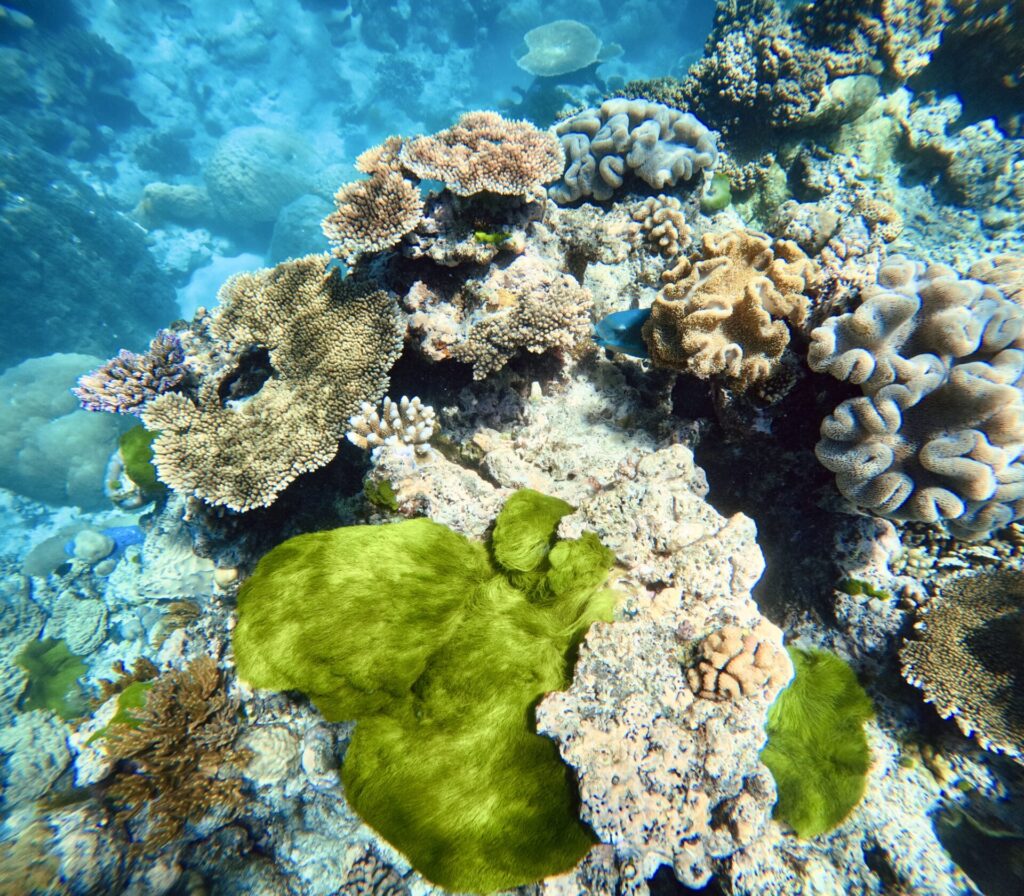
The best time to visit the Great Barrier Reef
The best time to visit the Great Barrier Reef is when the water conditions are the best. The clearest water is during the dry season, which runs May to October. The water is still warm despite it being winter.
November to April is warmer but is also stinger season. During stinger season you’ll have to wear a a stinger suit, which is like a full wetsuit. This will protect you from the deadly jellyfishes that are abundant during this time. The summer is also rainy, which can lead to poor water clarity and stormy conditions.
I visited Cairns at the beginning of September and found it to be perfect conditions. Days were sunny and long. The water was very clear and fairly flat. Temperatures were very comfortable, in the low 80’s (Fahrenheit) during the day and the water was almost 80 as well.
Should you take a day trip tour or do a multi-day liveaboard?
The GBR lies a few miles offshore and covers an area of approximately 133,000 square miles. Therefore, it can take a long time to actually reach the reef. Day excursions only give you limited time in the water and can’t take you to the best areas on the outer reef. The best way to see the reef is to stay there, overnight.
Diving the Great Barrier Reef was one of my principal reasons for getting dive certified and planning a trip to Australia. It was important to me to not spend all that time researching and preparing to only be in the water for an hour or two. Just one night on the reef would give me the opportunity to get into the water seven times, so definitely worth it if you love the ocean.
If you only have one day to be out on the reef then I recommend using Reef Experience. They are the same operators as the liveaboard, and take you to some of the same great dive sites on the outer reef. Check out their rating on TripAdvisor for yourself.
One of these top rated snorkeling tours would also be a nice choice for a family. The luxury option seems particularly appealing, as the smaller the group on the boat, the better service you’ll get. Many tour options also include a glass bottom boat ride, lunch, or even a water slide!
What is a liveaboard?
A liveaboard allows you to live onboard a boat. With cabins to sleep comfortably and meals provided, you’ll have everything you need to spend all day scuba diving and snorkeling. Sizes and styles vary depending on the operator.
The boat stays out on the water the entire time, moving to new dive sites frequently. This cuts the time it takes to go back and forth to land, meaning you can start your day on the water right when you get up, and before other tourist boats may arrive.
How many nights should you stay on the Great Barrier Reef
The more nights you stay on the reef, the more you’ll see. Every time you get into the water it’s a new experience with different sealife, coral architecture, and conditions.
Once I knew that you could actually sleep at the reef, and at a reasonable rate, I was sold. However, as someone just starting out with scuba diving and being more used to luxurious cruise ships than research vessels, I wasn’t sure what to expect from this experience.
For that reason, I did only a two day/one night trip. Now I would wholeheartedly stay a few more nights, and understand why many of these trips can be a week long.
Pick the number of nights that works for your schedule and suits your interest. One night is enough to see way more than a day tour and allows for night diving. Two to three nights will allow you to cover even more dive locations and is a good sweet spot for most recreational divers. More nights means even more opportunities to spot rare fish like the mola mola.
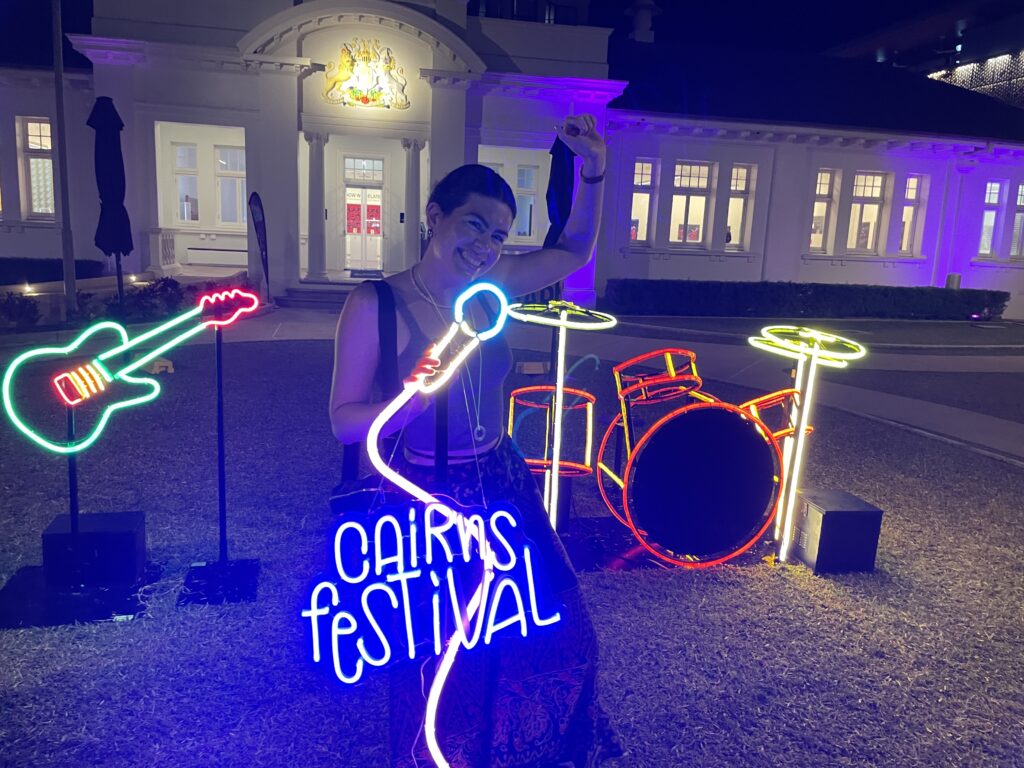
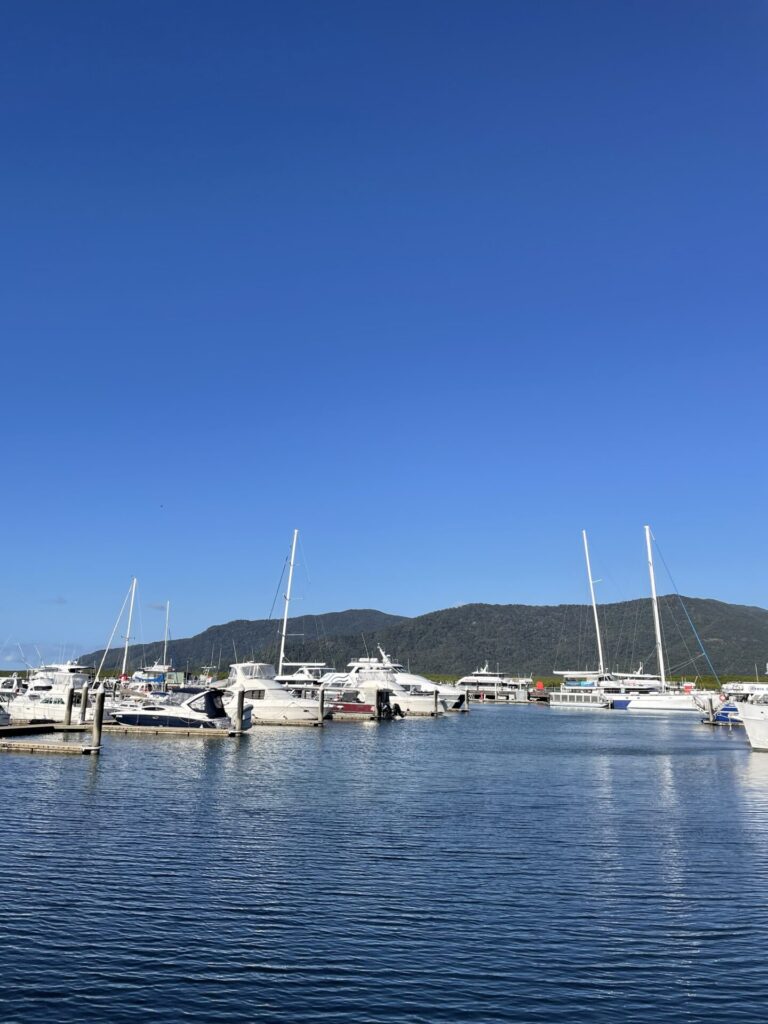
Diving out of Cairns
There are various options depending on what part of the Great Barrier Reef you’d like to see or where you are basing your travels out of. I decided to base my trip out of Cairns. This is one of the points where the GBR is closest to shore.
Cairns offers a variety of options for every budget to see the reef, is easy to fly into, and hosts a variety of other attractions. Things to do include the Cairns Aquarium, Kuranda Skyrail, and the night market.
Explore nearby islands like Fitzroy Island or swim in waterfalls in the Atherton Tablelands. Cairns is also in close proximity to another UNESCO World Heritage Site, the Daintree Rainforest. Take a tour up to see the crocodiles, rainforest, and waterfalls of the Daintree. Find out how to plan the rest of your days in Cairns by referring to my Australia Itinerary Guide.
If you do not plan to visit Cairns, then check out the Whitsundays. Known for its award winning beaches and honeymoon worthy spots, there is also a unique accommodation option. Reefsuites offers Australia’s first underwater room on the Great Barrier Reef. Wall to wall glass immerses you in the undersea world as you literally get to sleep with the fishes. You could also decide to sleep under the stars with Reefsleep, which are small tents on the upper deck of the boat.
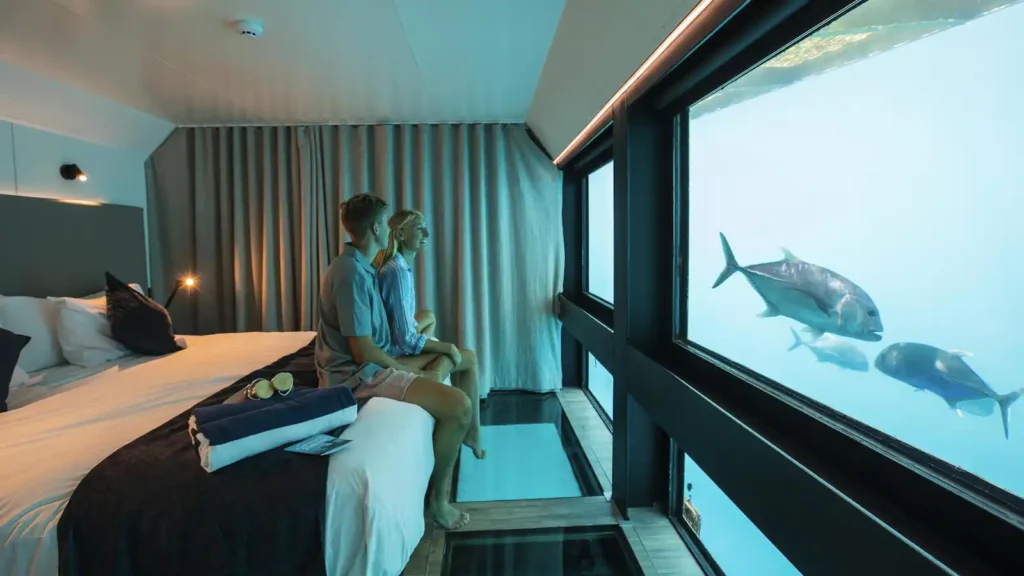
Why I chose Reef Encounters
Stellar reviews of great food and comfortable accommodations at the right price, on the right date, made it easy to choose Reef Encounters. Reef Encounters was one of the few operators that allowed stays as short as one night and did not tack on a single person surcharge.
When speaking with the staff beforehand at the office, they were super helpful in accommodating some last minute needs I had and found all the staff and volunteers to be super friendly and cheerful. It is clear that they make this a positive working environment. I even heard it commented on from other divers who had tried other operators in the area, how much better Reef Encounters was in employeee satisfaction, volunteer experience, and good food!
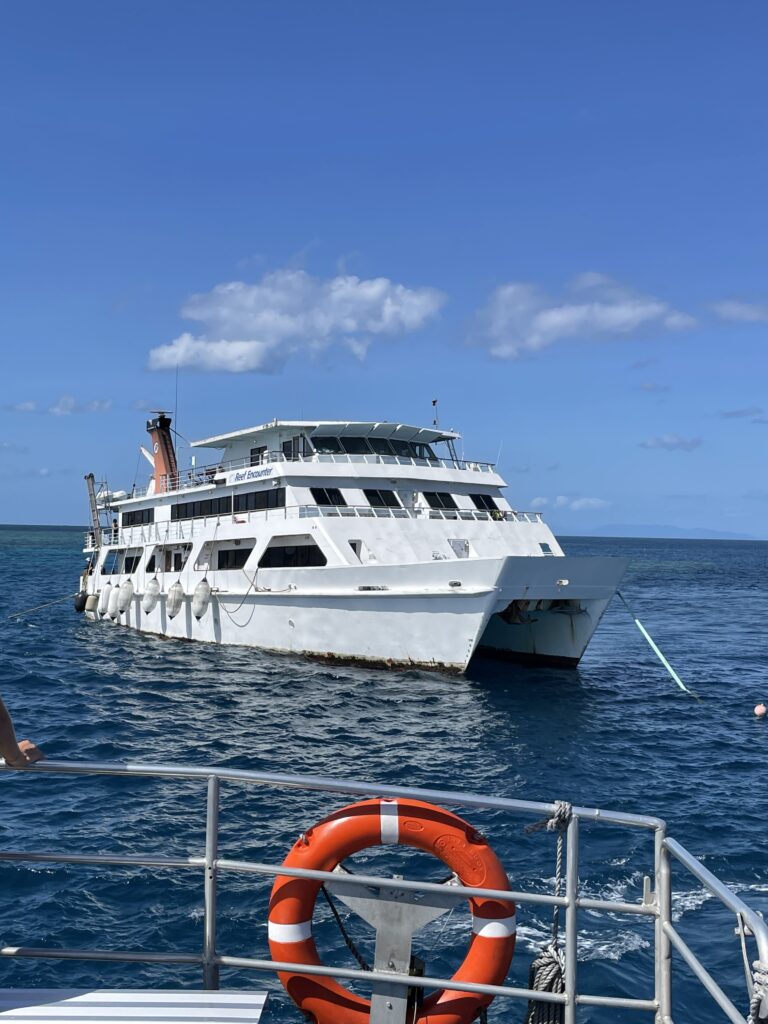
Check in and boarding on Reef Encounters
If you have any large luggage with you, leave it at their office where they are happy to store it. Pack your essentials in a smaller bag. You can save yourself the embarrassment I had when they were trying lift my huge red luggage into the boat. I had packed my things into a smaller bag, but had completely forgotten to leave my luggage at the office.
If you are not staying close to the docks, you can add on shuttle transportation to and from the marina. There is also the option to upgrade your trip with a helicopter ride to or from the reef instead of riding a boat to the liveaboard. This would be a spectacular way to see the Great Barrier Reef from the air and cut down on your travel time.
Head to the docks in Cairns bright and early to start your adventure. Boarding starts at 7:30 AM on their sister boat, Reef Experience, at Finger A on the Marlin Jetty in Cairns. As you board the boat, you are checked in, luggage whisked away for the ride, and led upstairs. The upstairs is where all the guests that are staying overnight are, while the downstairs is filled with the day tour snorkelers.
There was cut fruit at the table for us upstairs and once we got going they brought us some more breakfast items. Instant coffee and tea available downstairs for everyone.
The journey was two hours to the location where the liveaboard boat, Reef Encounters, was stationed on the GBR. Once we got close, the crew deftly tied the boats together for the exchange of passengers, luggage, and provisions. The day trip snorkelers stay on that transit boat, Reef Experience, while those staying overnight board the liveaboard.
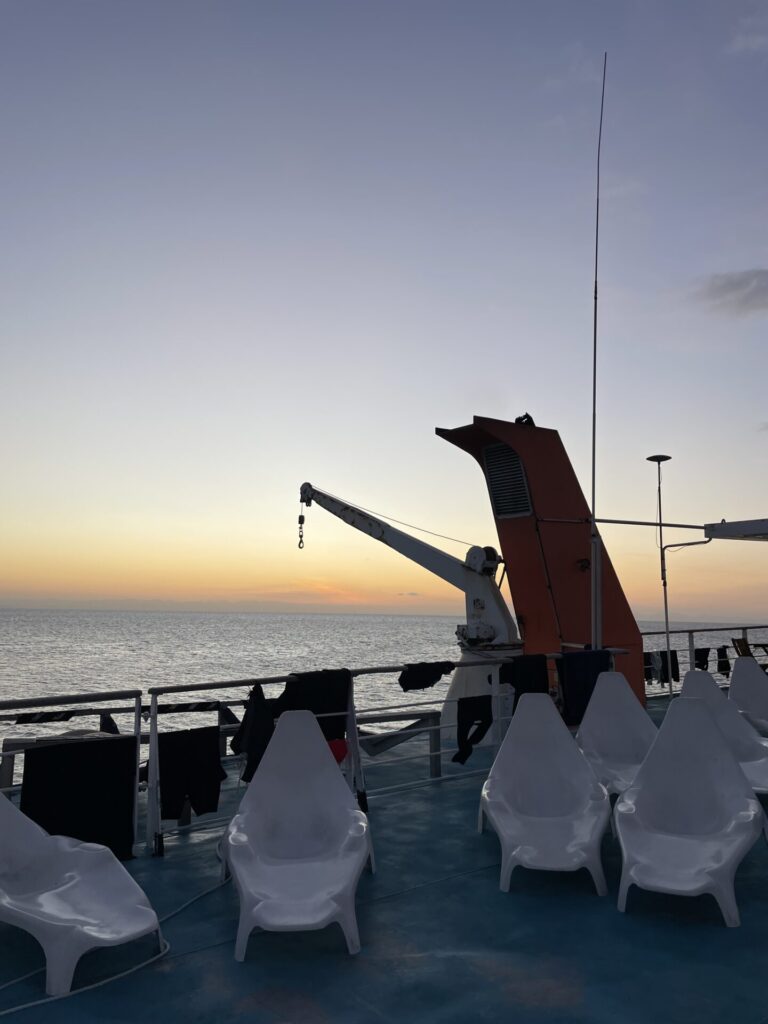
At this point it should be about 10 AM. There’s then a quick briefing about the schedule onboard and you’ll be assigned your equipment and wetsuit. Tanks and BCD’s stay affixed outside on the lower lever, and your more personal items like mask, fins, and wetsuit are stored in a crate assigned to you on the upper level.
Hot tip: if you want your things to dry faster, then hang them on the rails of the rooftop terrace, which happens to be the best place to warm up after a long dive too.
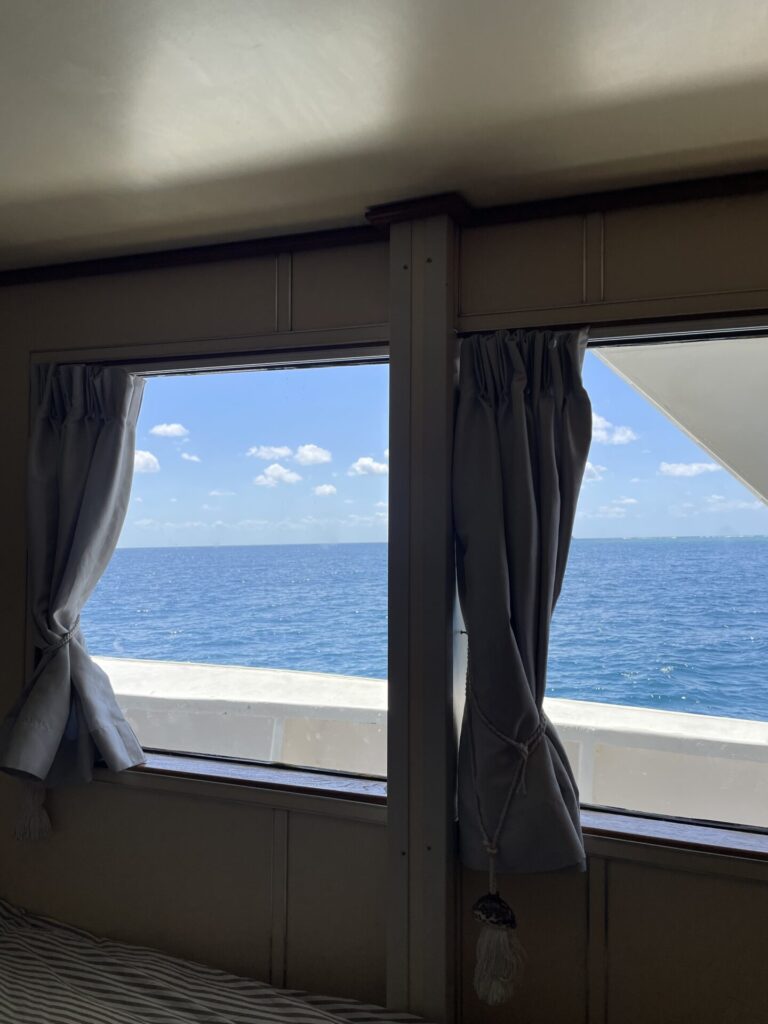
Reef Encounters Ship Orientation
Stateroom- Twin Share
It has an ocean view! Clean, comfortable, and functional. Each room has it’s own bathroom and while it is compact, there is a small desk. The stateroom is air conditioned and there were fresh towels and toiletries on the bed. The electrical plugs are Australian so you may need to bring an outlet convertor. I was in a twin share room, but they also have double bed staterooms.
You may be rooming with someone you don’t know if you are going on alone in a twin share room and a roommate of the same gender cannot be guaranteed. You can also choose to pay a fee to keep the room all to yourself, which would be double the single rate.
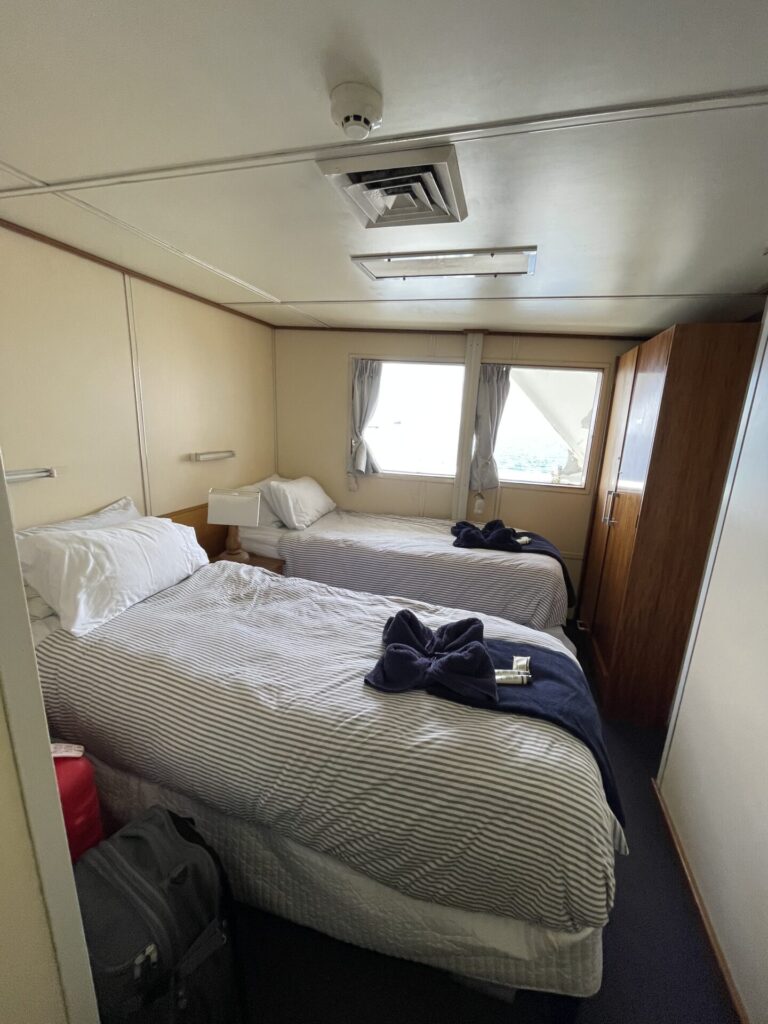
Common Areas
The common area on the lower level is comprises of a lounge area, dive briefing area, photography services corner, bar, and a dining area. The comfy couches and bean bags invite everyone to hang out. The dining area is right by the kitchen and there is a counter where you’ll find snacks and the buffet area.
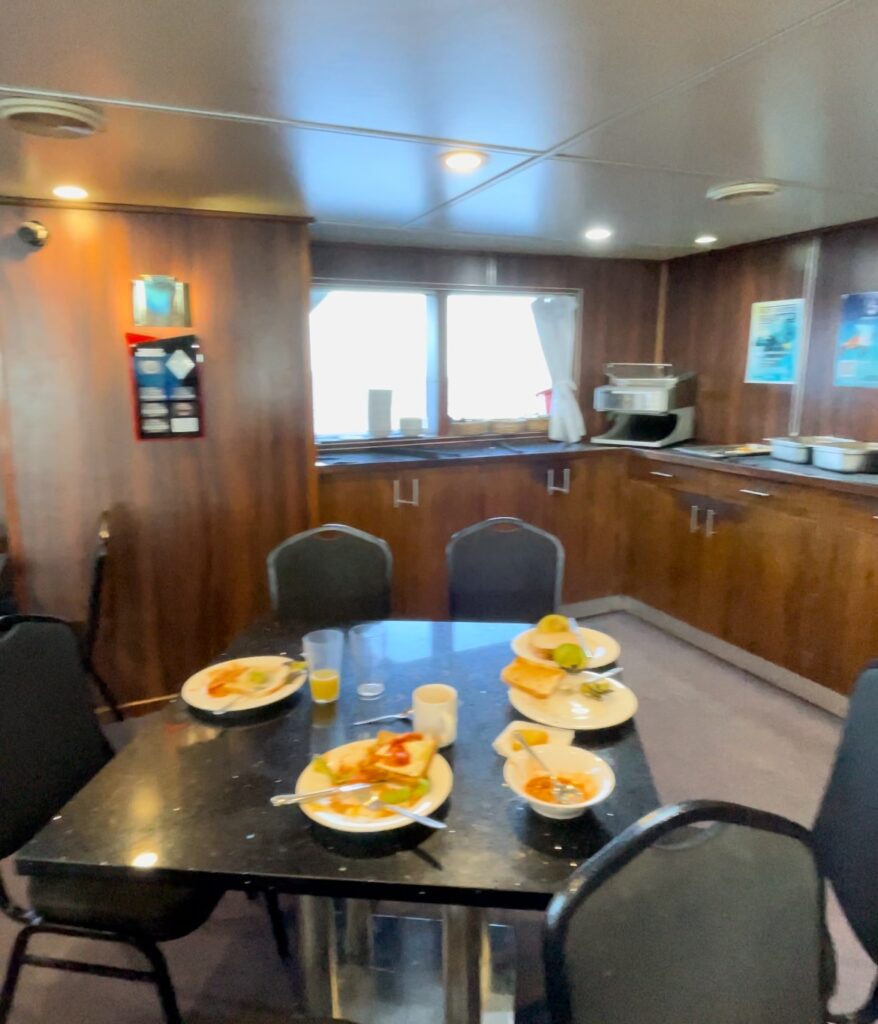
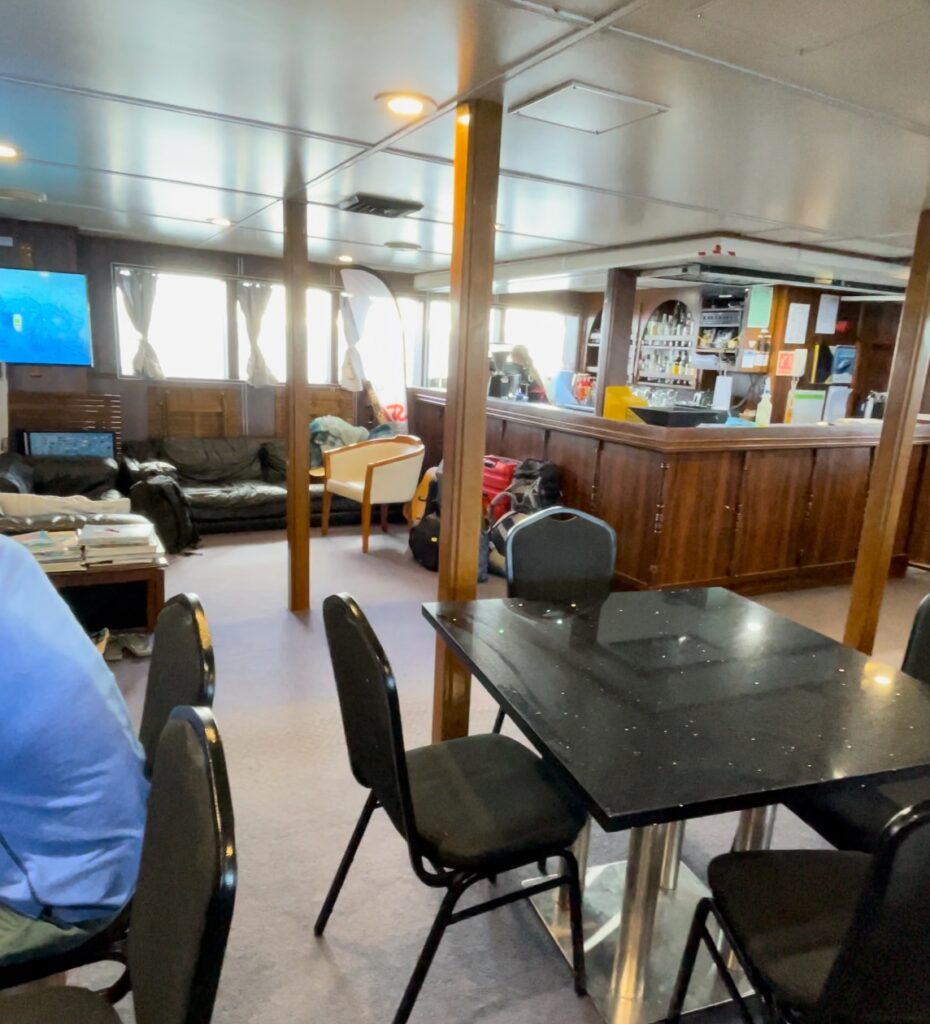
Diving Schedule
There are three morning dives, two afternoon dives, and one night dive daily. Don’t worry, you are not required to do all the dives, just do whichever ones you’d like! Water Sessions at at 6:30, 8:30, 10:30, 13:15, 15:30, and the night dive time depends on the season.
At any of the designated dive times, you could choose to snorkel instead. I think it’s so great to have this option in case you are not feeling well or unable to equalize that day, it doesn’t mean you have to miss out. There were usually a number of snorkelers out there so you aren’t alone either.
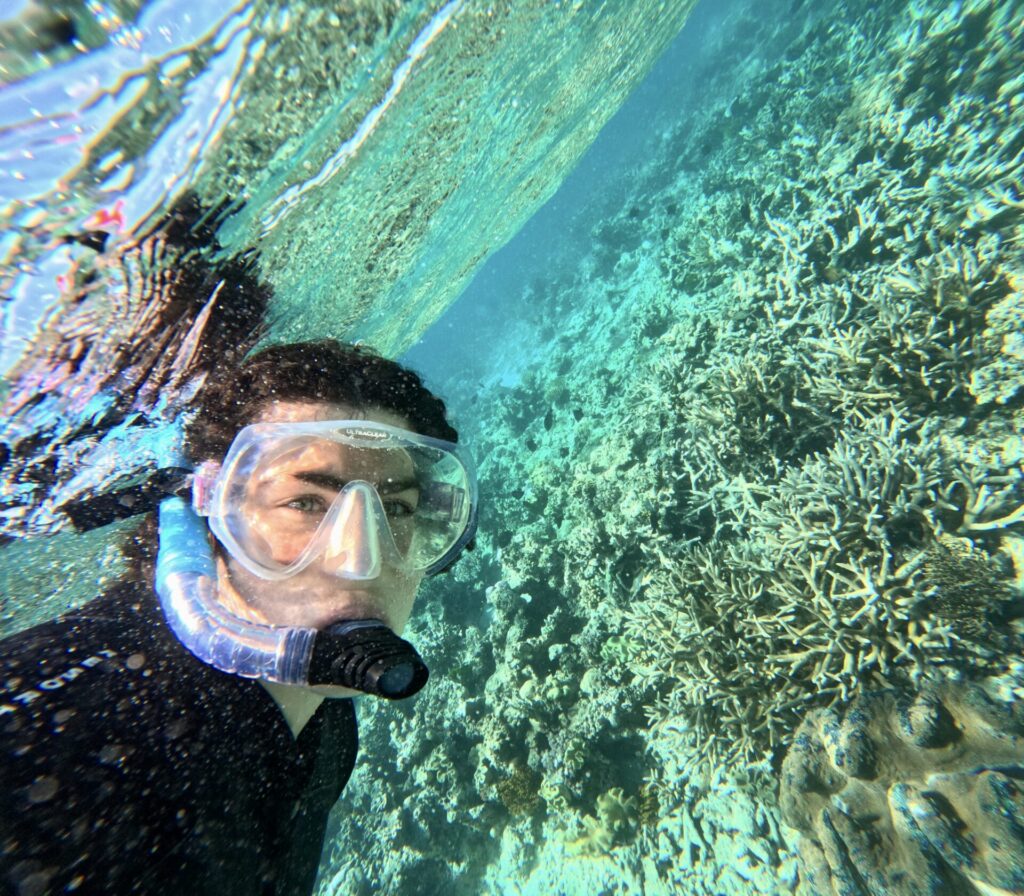
The boat moves twice a day, after breakfast, and at 15:00.
When you first arrive, you’ll have the opportunity to snorkel first while the group that is checking out at that day uses the equipment to finish their last dives. I didn’t mind this as I liked being able to swim at my own pace and get used to my surroundings and the reef conditions. The snorkeling was fantastic since there were plenty of areas shallow enough to see lots of reef and fish.
After your first snorkel, you are free to scuba dive!
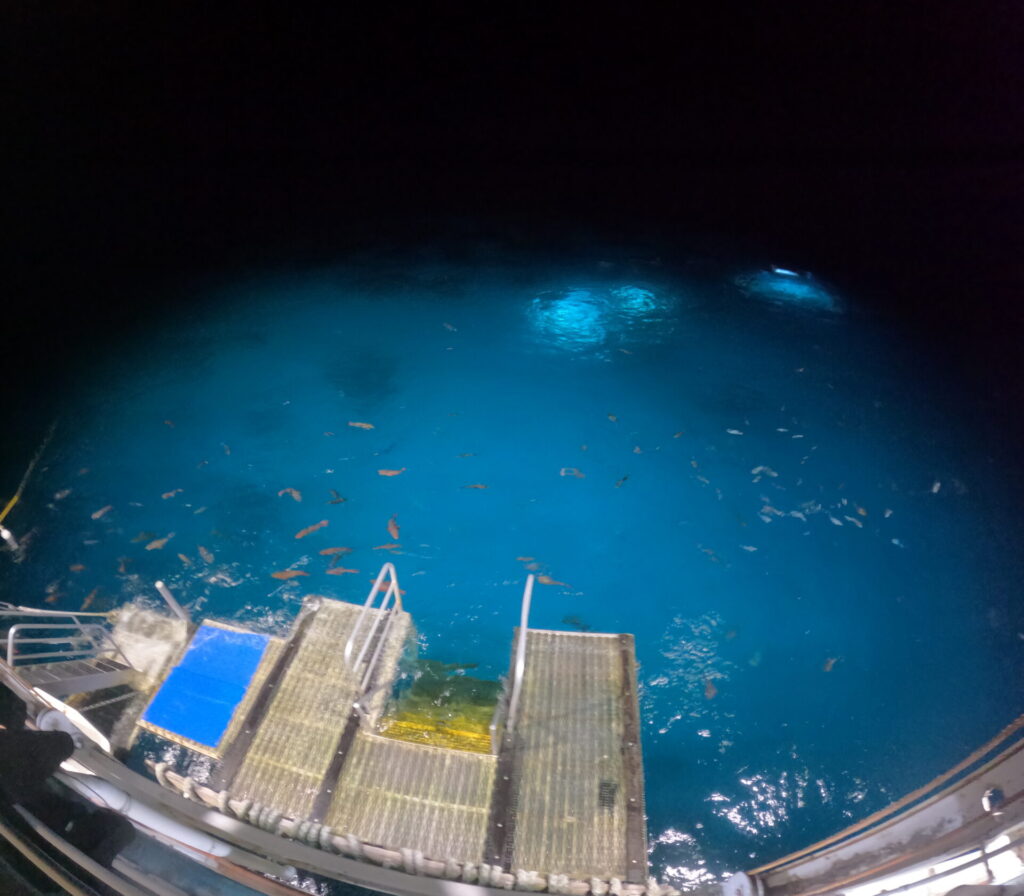
Equipment
When you are reserving your trip with Reef Encounters, you’ll be able to select all the equipment you may need. Dive equipment, mask, fins, wetsuit, go pro, it’s all available.
There are a few things that are essential for you to own if you regularly participate in water activities. I brought my own mask for a better fit; I hate using rental masks that leak or press against my forehead. I also like having my own GoPro to be able to record videos of my dives to show to my friends and family, without the worry of something happening to a rental camera.
All their equipment was well maintained and the fins were good. If you prefer a full wetsuit during the dry season, then bring your own as they were only offering shorties.
Dive Sites, Briefing, and Guide
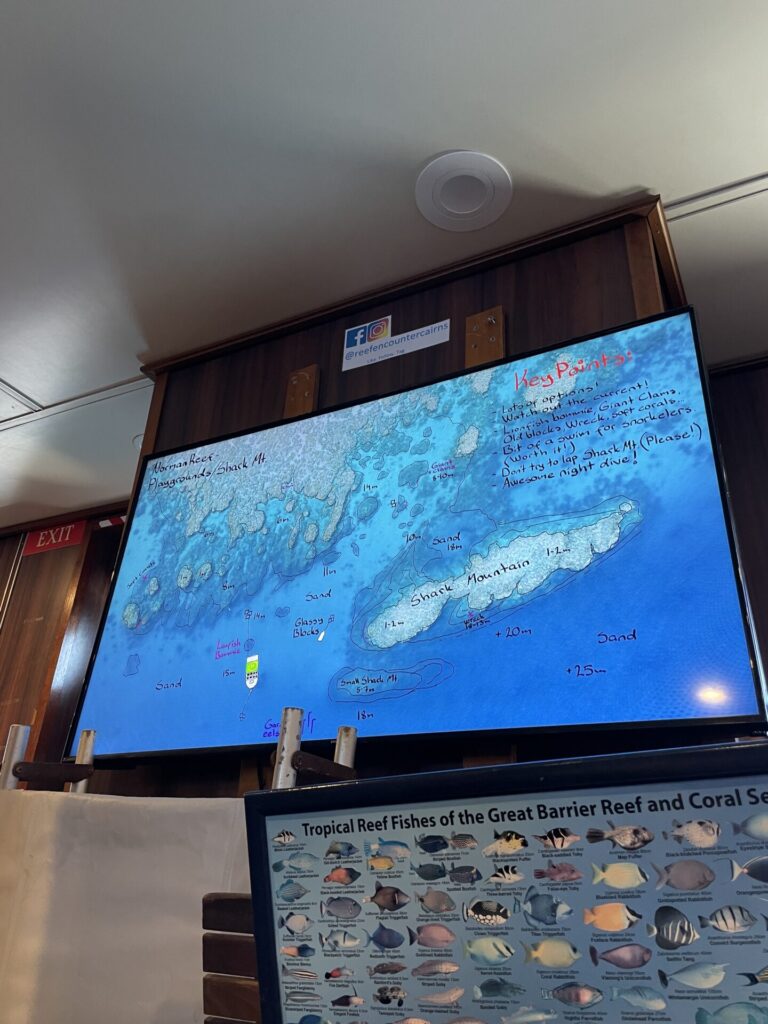
Before getting in the water, a marine biologist gives the dive briefing. We were shown a map of the reef location we were at, navigational tips, and what sea life to look out for. It was interesting to see how differently each reef was laid out, and therefore required a different approach.
You could see that the dive site shown in the picture centralized around ‘Shark Mountain.’ The next dive site we visited though had fingers that you went down and out, exploring each crevasse.
This made me feel much more comfortable in the water since I knew the game plan and where I should be looking for those giant clams! I chose to add on a dive guide at the time of booking, but you can also request one onboard. Dive guides were assigned to small groups of divers. The dive groups were determined on experience level, which was nice since novices won’t hold back more adventurous experts, nor feel the pressure to keep up.
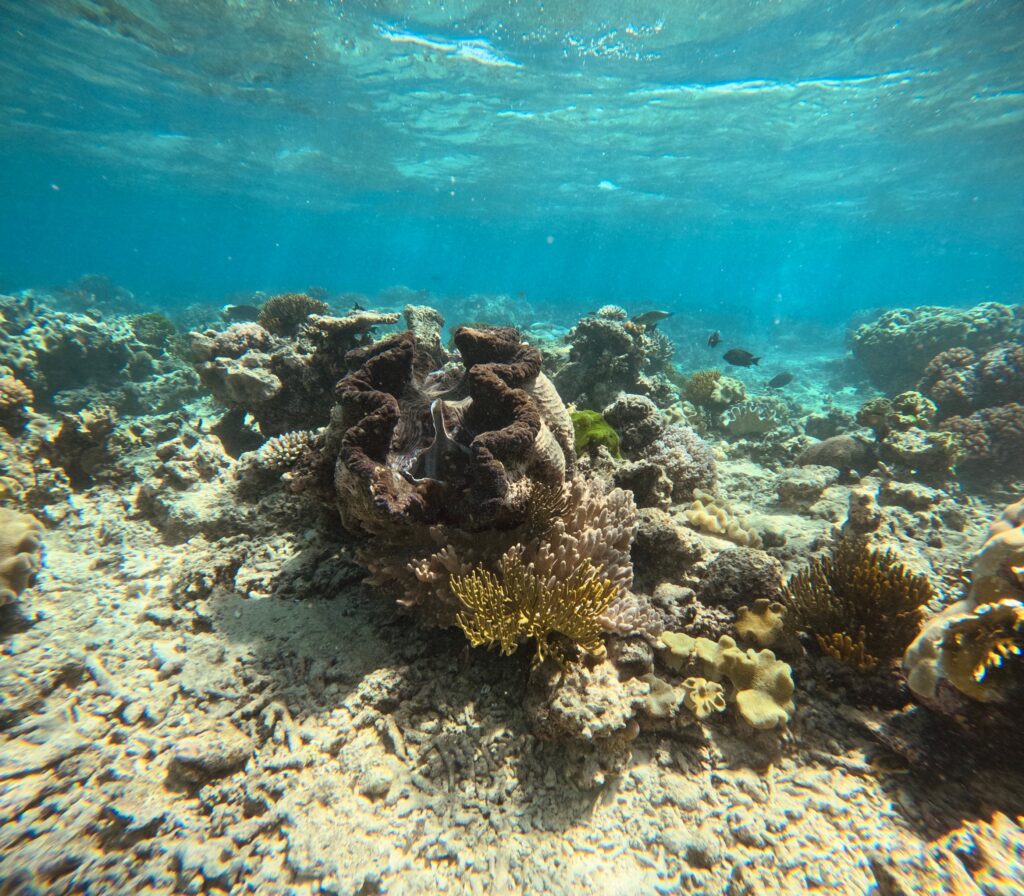
The photographer onboard also pops in during the briefing just to let you know he’ll be getting shots of everyone in the water. Photos are for sale, and they do get some great ones! Now I just need to figure out how to pose underwater.
My guides throughout the dives always kept a good watch on everyone and made sure we had a good time. I would highly recommend getting a dive guide. I felt peace of mind knowing someone experienced was there in case something went wrong. Letting them do all the navigating and just getting to have a blast swimming around in the ocean is another plus.
The dive sites were all extensive, with many areas to explore and huge coral formations. There was some bleaching, but it did not take away from the overall experience. I saw plenty of fish and really enjoyed the night dive because the animals that were active were completely different from during the day.
The Food
I was shocked with how good the food was. I didn’t have high expectations considering the limited resources, but everything was excellent. A full breakfast, lunch, dinner, and desert daily is included with your rate.
I stopped taking pictures when I started making friends, but here are the first two meals I enjoyed. A healthy falafel, chicken, and greek salad, that I should have assembled all inside the pita, for lunch. A satisfying burger and crispy French fires for dinner.
Breakfast and lunch are served buffet style, while dinner is plated. I think the meals struck the perfect balance of being protein rich to combat the hunger from swimming all day, without being too filling.
Alcoholic drinks were also available onboard at the bar. However, Australia law dictates that one cannot go scuba diving within 12 hours of having an alcoholic beverage. So save that piña colada for after your last dive on the trip.
There is also the option to book the ‘top deck experience‘ where you can have dinner under the stars at private table. This includes a more gourmet meal, cooked to order breakfast, sunset cocktails, late checkout, and a personal valet.
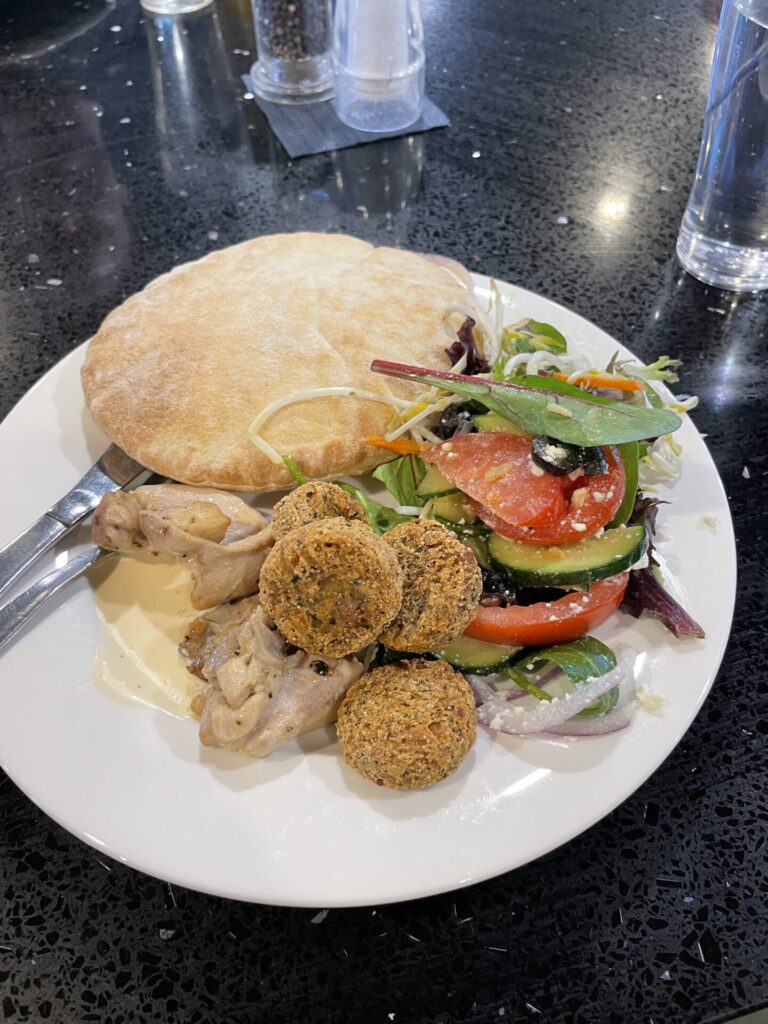
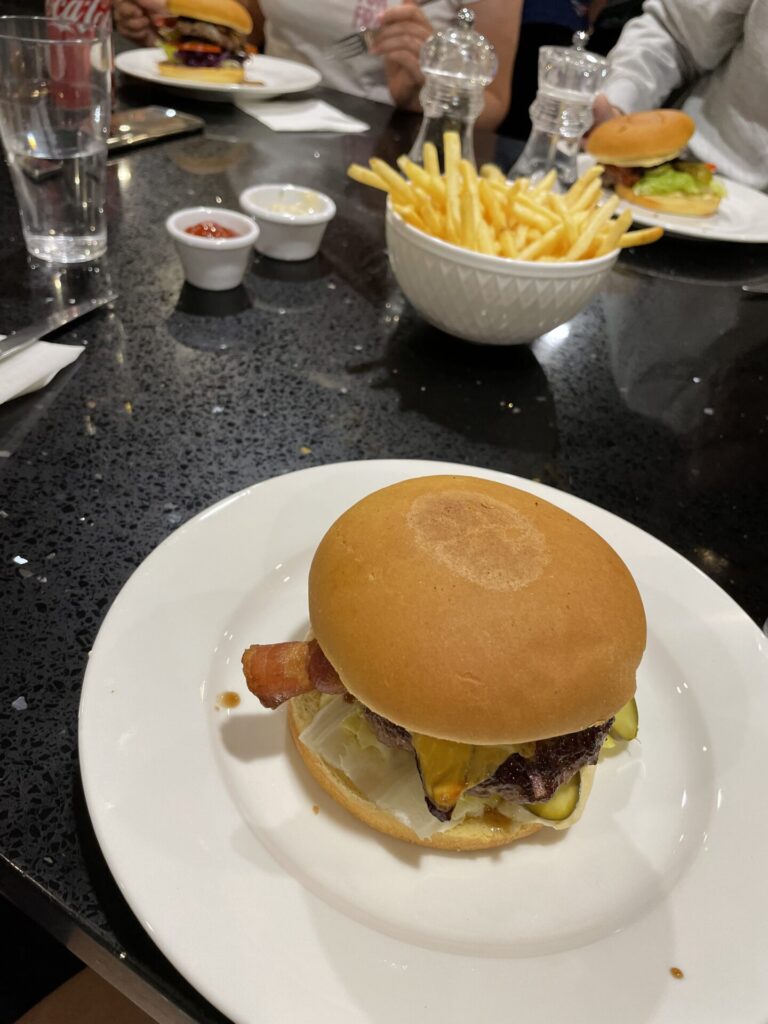
The Vibe
People from all over the world were there diving with Reef Encounters. Couples, single people, older people, younger people, all were present. It was interesting to see how the love for a sport exploring the natural world can bring all sorts of people together.
Everyone was welcoming and unpretentious. The relaxed atmosphere and group experiences naturally brought us together to talk about our dives, travels, and lives back home. This wasn’t rowdy group of teenagers, rather it was a group of passionate professionals. Board games were available to play or bring your own family and friends for a fun time.
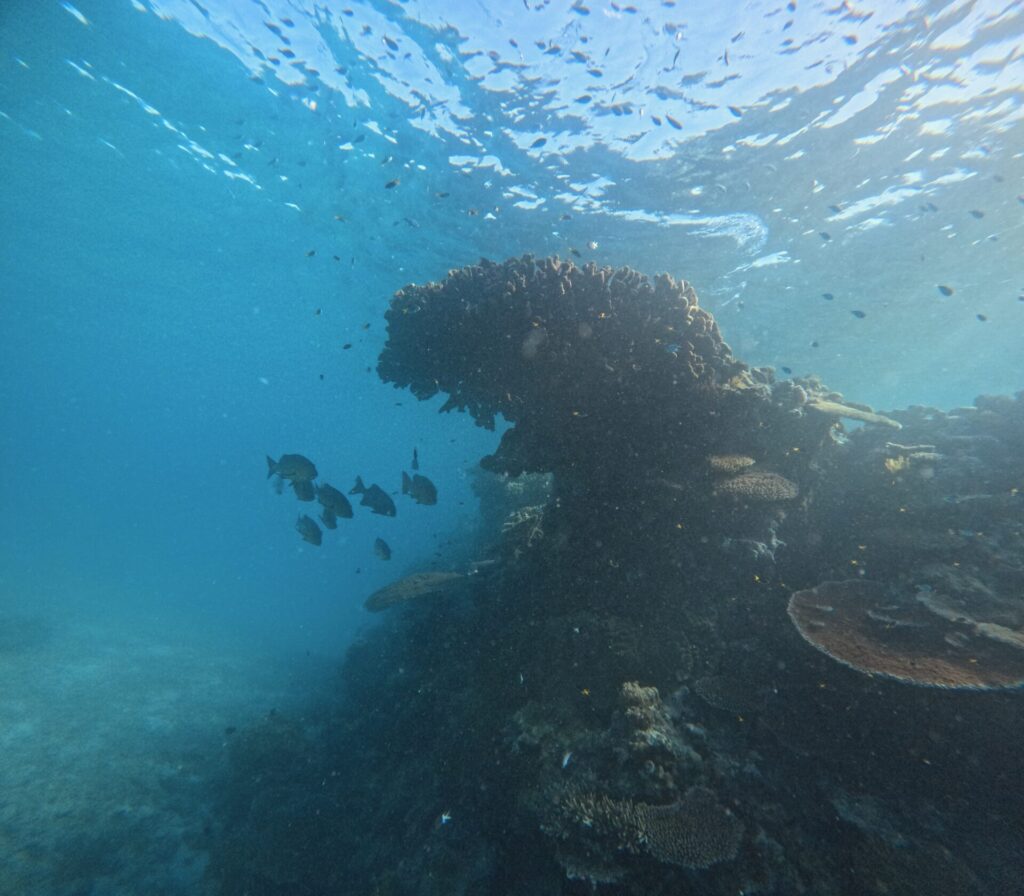
Reef Encounter Rates
Rates per person: From 585 AUD for one night, 825 AUD for two nights, 1065 AUD for three nights, and so on. Check their website for their calendar and rates. You could also extend your stay by volunteering onboard, contact them for more details.
Snorkeling is free. Add on Scuba Diving starting at 90 AUD.
Disembarkation
The journey back to Cairns is essentially the reverse of the journey over. Check out is at 8 am, but you’ll have more opportunities to get in the water that day despite not having room access. You’ll actually be leaving in the early afternoon to return to Cairns. This puts arrival in Cairns at around 5 pm on the Reef Experience boat that takes the day trippers.
Would I choose Reef Encounters again?
Absolutely! It might not have been too fancy, but it was exactly what I needed. I felt a tinge of sadness in leaving, not knowing when I might return to the GBR and wish I could have stayed longer. On stepping off the boat, I felt a sense of relaxation and contentment that came from truly disconnecting from the world for two days and reconnecting with nature, without a care in the world other than when can I get in the water again?

